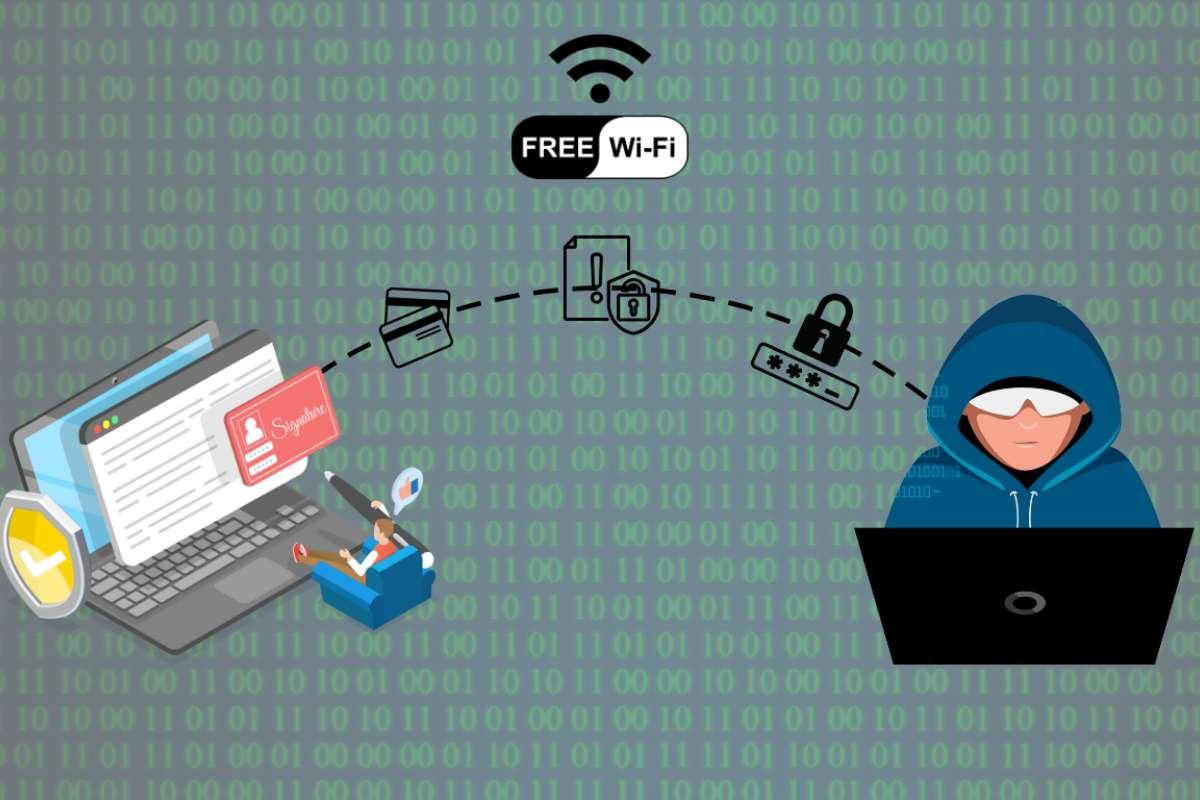Imagine logging into your favorite coffee shop’s Wi-Fi—one click, and you’re connected. But someone else might be connected too… watching, tracking, and waiting. In today’s always-online world, convenience comes with risks. That’s where Wireless Network Security comes in. It’s not just a tech term, but the quiet protector of your personal information, identity, and privacy. Whether you run a business, work from home, or just watch Netflix on public Wi-Fi, knowing about Wireless Network Security is no longer optional—it’s very important.
Understanding Wireless Network Security
Wireless network security refers to the measures and protocols implemented to protect data transmitted over wireless (Wi-Fi) networks. Unlike wired networks, where physical connections offer a layer of protection, wireless networks transmit data through the air, making them more susceptible to unauthorized access, eavesdropping, and cyberattacks.
At its core, wireless security includes a combination of hardware (routers, firewalls), software (encryption protocols), and policies (user access control, password management) designed to prevent, detect, and respond to threats.
Why Wireless Networks Are a Target?
Hackers see wireless networks as low-hanging fruit for several reasons:
- Open Access Points: Many public and private Wi-Fi setups still use outdated or weak security protocols.
- Default Settings: Routers often ship with default usernames and passwords, which are easily exploited.
- Inadequate Encryption: Without proper encryption, like WPA3, data is transmitted in a readable format.
- IoT Explosion: The rise in smart home devices has increased the number of endpoints on a network, expanding the attack surface.
A 2024 report by Cybersecurity Ventures estimated that 60% of small businesses with weak network security fall victim to cyberattacks annually, leading to significant financial and reputational damage.
Common Threats to Wireless Network Security
1. Evil Twin Attacks
This occurs when a hacker sets up a rogue Wi-Fi access point mimicking a legitimate one. Users unknowingly connect to it, giving attackers direct access to their data.
2. Man-in-the-Middle (MITM) Attacks
Once connected to an insecure or compromised network, a hacker can intercept communications between two parties without either party knowing.
3. Packet Sniffing

Attackers use tools to intercept and analyze network traffic, especially on unencrypted networks, to extract sensitive information like passwords or banking details.
4. Brute Force Attacks
Weak Wi-Fi passwords can be cracked using automated tools that attempt every possible combination until the correct one is found.
5. Firmware Exploits
Outdated router firmware can contain unpatched vulnerabilities that hackers exploit to gain control over the network.
Best Practices for Securing Wireless Networks
Security isn’t a one-time fix—it’s a continuous process. Here are the top industry-recognized practices that can dramatically strengthen wireless network security.
1. Use Strong Encryption (WPA3 Recommended)
Wi-Fi Protected Access 3 (WPA3) is currently the most robust encryption standard available for wireless networks. It replaces outdated protocols like WEP and WPA2, which are vulnerable to known exploits.
If your router doesn’t support WPA3, consider upgrading to one that does.
Similar Articles:
- Working at Home? You Should Take a Closer Look at Your Home Security – Some Tips
- Industrial IoT: Transforming Manufacturing through Connected Intelligence
2. Update Router Firmware Regularly
Manufacturers release firmware updates to patch known security vulnerabilities. Regular updates ensure your router has the latest protections.
Check the manufacturer’s website or app regularly for updates, or enable auto-updates if supported.
3. Change Default SSID and Admin Credentials

The SSID (Service Set Identifier) is the network name that shows up when users search for Wi-Fi. Leaving it as the factory default can reveal your router’s brand and model, making it easier for hackers to target known vulnerabilities.
Additionally, change the default admin username and password to something unique and complex.
4. Disable Remote Management
Remote administration features allow you to access your router’s settings from outside your network. While convenient, it also provides a potential entry point for hackers.
Unless necessary, turn this feature off in your router settings.
5. Enable Network Firewalls and Intrusion Detection
Most modern routers come with built-in firewall capabilities. Enable these features to add a layer of protection that blocks unauthorized access and monitors unusual activity.
For enhanced protection, consider using intrusion detection systems (IDS) like Snort or Suricata, which are open-source and enterprise-grade.
6. Segment Your Network
Create separate networks for guests, smart devices (IoT), and business operations. That way, even if one network is compromised, the others remain isolated.
For example:
- Primary network: Computers, phones, work-related devices
- Guest network: Friends, clients
- IoT network: Smart TVs, voice assistants, thermostats
7. Implement MAC Address Filtering
Media Access Control (MAC) filtering allows you to specify which devices can connect to your network based on their unique hardware address. This adds an extra layer of control but should be used in conjunction with other techniques, not as a sole line of defense.
Real-World Case Study: Target’s Wireless Breach
In 2013, retail giant Target suffered a breach affecting over 40 million customers. The attackers gained access not by hacking Target directly, but through a third-party HVAC vendor whose credentials were stolen via a compromised wireless network.
The breach led to an estimated loss of $162 million and forced Target to revamp its entire cybersecurity strategy. It also served as a wake-up call for businesses about the interconnectedness of wireless network security and third-party risk management.
Wireless Network Security in the Era of Remote Work
With remote and hybrid work models becoming the norm, the reliance on Wi-Fi networks has skyrocketed. But most home users don’t follow enterprise-grade security practices.
IT departments must now think beyond the corporate firewall and educate employees on securing their home networks. Providing VPN access, encouraging WPA3 usage, and supplying secure hardware are essential steps toward creating a secure remote work environment.
Future Trends in Wireless Network Protection
1. AI-Driven Security
Artificial Intelligence is increasingly being used to detect unusual patterns, automate responses to threats, and analyze massive datasets to predict potential vulnerabilities.
2. Quantum-Safe Encryption

As quantum computing advances, traditional encryption methods could become obsolete. Security experts are already exploring quantum-resistant encryption techniques to future-proof wireless network security.
3. Zero Trust Network Architecture (ZTNA)
ZTNA is a model where no device or user is trusted by default, even if they’re inside the network perimeter. It demands continuous authentication and strict access controls, making it ideal for dynamic environments.
Similar Articles:
- Wireless Network Jammers: What They Are, How They Work, and Their Implications?
- Evolution of Wireless LAN Technology: A Comprehensive Overview
- The Backbone of Connectivity: Navigating LAN Infrastructure
Wireless network security is not just a technical challenge—it’s a business imperative. As we move toward increasingly digital and interconnected systems, the risks of unsecured wireless networks become too great to ignore.
Conclusion
Whether you’re an individual protecting your home Wi-Fi or a CTO overseeing enterprise infrastructure, the message is clear: proactive, layered, and continuous security measures are essential. The investment in securing your wireless network today could prevent a costly and reputation-damaging breach tomorrow.










